1.安装nodejs服务器。
java 项目可以运行在 tomcat 服务器,开始完成前后端完全分离。前端有自己独立的工程。我们需 要把前端独立的工程运行起来。 --- 运行在 nodejs 服务器下。 理解为 tomcat 服务器 安装成功后在命令窗口查看
安装成功后在命令窗口查看 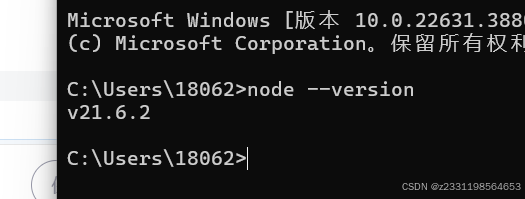
1.1 安装npm
java 项目需要依赖 jar ,安装 maven 。 前端项目需要依赖第三方的插件。比如 axios elementui echarts 前端也需要一个管理组件的软件。 npm. 如果 package.json 文件 类似于 pom.xml 文件。 npm 通过该文件 package.json 文件安装依赖的插件。 如果安装了 node 默认 安装了 npm. 验证 : npm -v
2. 安装vue cli的脚手架
帮你创建前端项目工程。它的安装需要依赖上面的npm
2.1 安装vue cli
npm install -g @vue/cli -g: global 全局 验证是否安装成功 : vue --version
3. 使用vuecli搭建vue前端项目
第一种使用命令 : vue create 第二种使用图形化界面: vue ui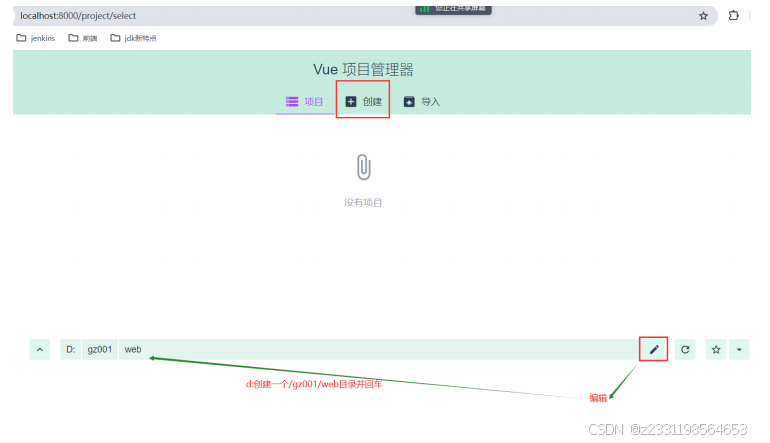
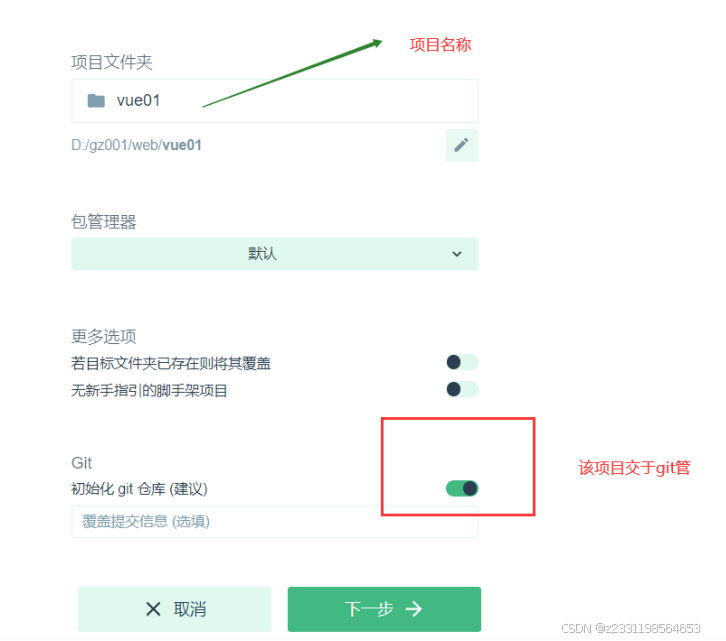
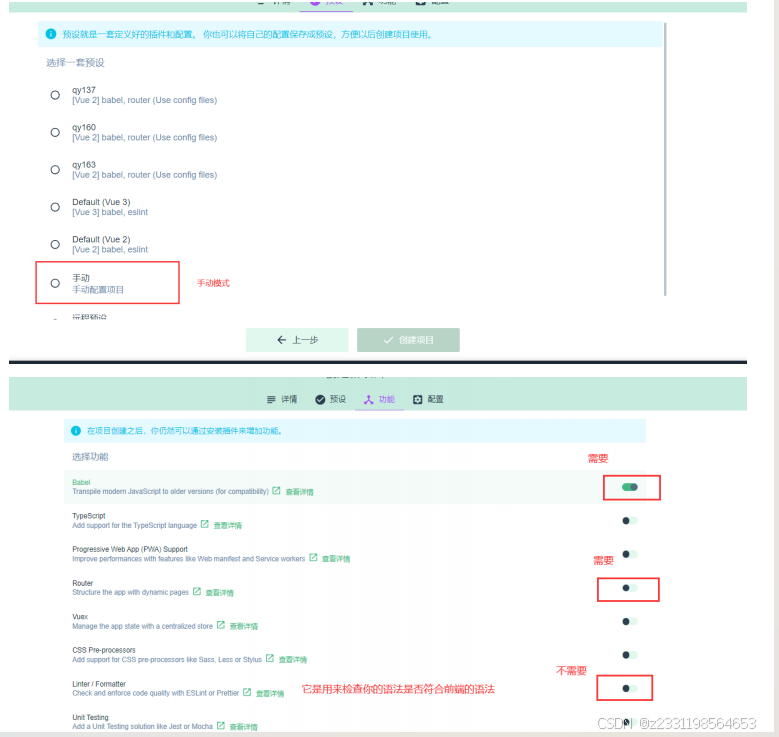

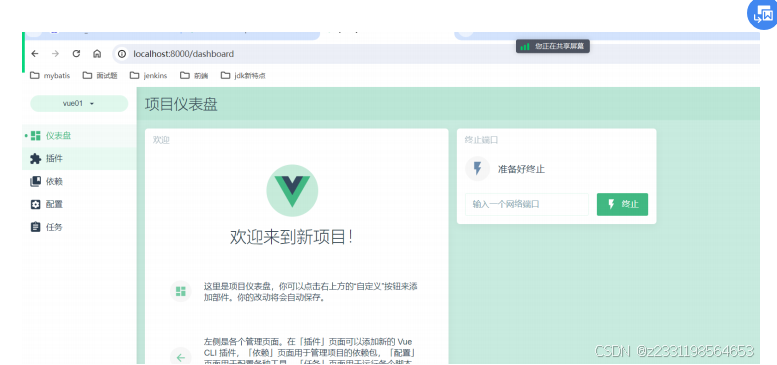
3.1 安装相应的插件--elementui
安装插件有两种方式 : 第一种使用命令 : npm i element-ui -S 第二种使用图形化 :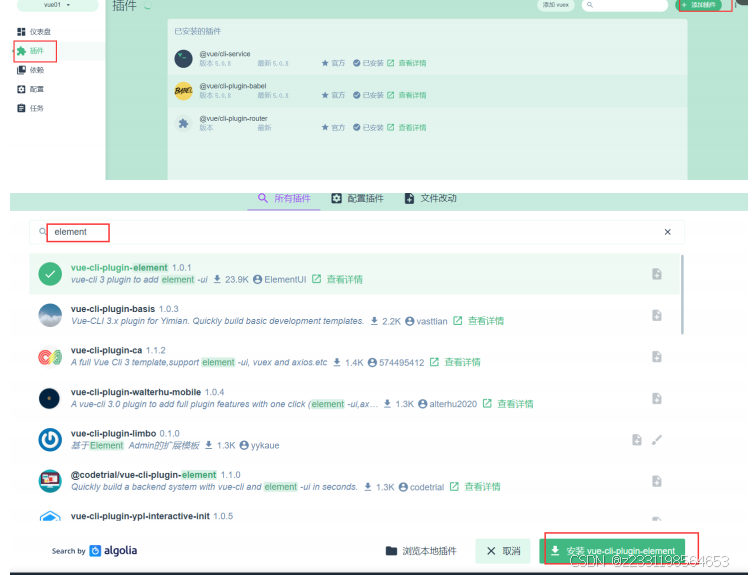
2.2 安装axios依赖
发送异步请求的。 第一种命令 : npm i -S axios 第二种图形化 : 如下
4. 使用客户端软件打开vue工程
vscode [ 专业的前端工具 ] webstorm [idea 团队开发的软件 -- 只要会使用 idea 那么也会使用该工具 ] hbuilder [ 适合前端 ] 在 webstorm 中启动该项目
在 webstorm 中启动该项目  vue 原理
vue 原理 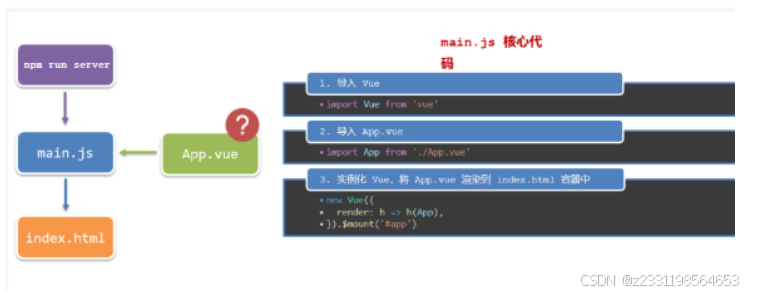
5. 组件化开发
组件化:一个页面可以拆分成一个个组件,每个组件有着自己独立的结构 [html] 、样式 [css] 、行为 [js] 。 好处:便于维护,利于复用 → 提升开发效率。 组件分类:普通组件、根组件。 比如:下面这个页面,可以把所有的代码都写在一个页面中,但是这样显得代码比较混乱,难易维 护。咱们可以按模块进行组件划分
6. 根组件 App.vue
1. 根组件介绍 整个应用最上层的组件,包裹所有普通小组件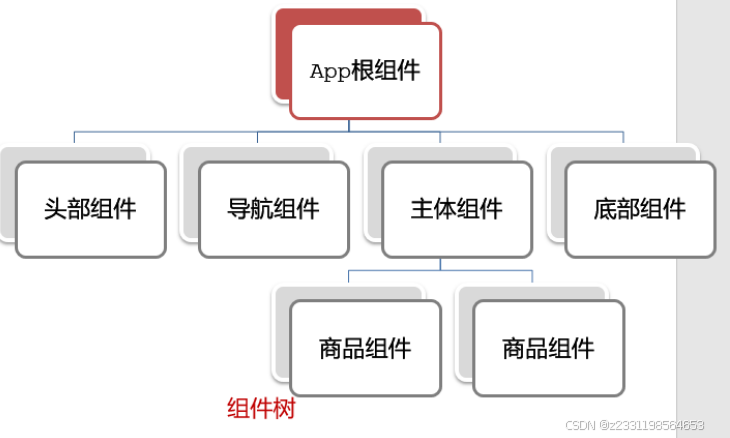 2. 组件是由三部分构成 三部分构成 template :结构 (有且只能一个根元素) script: js 逻辑 style : 样式 ( 可支持 less ,需要装包 ) 让组件支持 less ( 1 ) style 标签, lang="less" 开启 less 功能 ( 2 ) 装包 : yarn add less less-loader -D 或者 npm i less less-loader -D
2. 组件是由三部分构成 三部分构成 template :结构 (有且只能一个根元素) script: js 逻辑 style : 样式 ( 可支持 less ,需要装包 ) 让组件支持 less ( 1 ) style 标签, lang="less" 开启 less 功能 ( 2 ) 装包 : yarn add less less-loader -D 或者 npm i less less-loader -D 7. 普通组件的注册使用
普通组件的注册有两种方式。 ( 1 )局部注册: ( 2 )全局注册 普通组件的注册使用 - 局部注册 1. 特点: 只能在注册的组件内使用 2. 步骤: 1. 创建 .vue 文件(三个组成部分) 2. 在使用的组件内先导入再注册,最后使用 3. 使用方式: 当成 html 标签使用即可 < 组件名 ></ 组件名 > 4. 注意: 组件名规范 —> 大驼峰命名法, 如 AAAHeader 5. 语法:// 导入需要注册的组件// import 组件对象 from '.vue文件路径'import AAAHeader from './components/AAAHeader'export default {• // 局部注册components: {'组件名': 组件对象,AAAHeader:AAAHeader,AAAHeader}}8. 组件通信
1. 什么是组件通信? 组件通信,就是指 组件与组件 之间的 数据传递 组件的数据是独立的,无法直接访问其他组件的数据。 想使用其他组件的数据,就需要组件通信 2. 组件之间如何通信 3. 组件关系分类 1. 父子关系 2. 非父子关系
3. 组件关系分类 1. 父子关系 2. 非父子关系 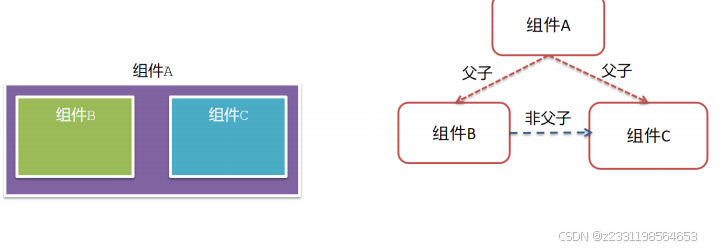 5. 父子通信流程 1. 父组件通过 props 将数据传递给子组件 [ 重点 ] 2. 子组件利用 $emit 通知父组件修改更新
5. 父子通信流程 1. 父组件通过 props 将数据传递给子组件 [ 重点 ] 2. 子组件利用 $emit 通知父组件修改更新 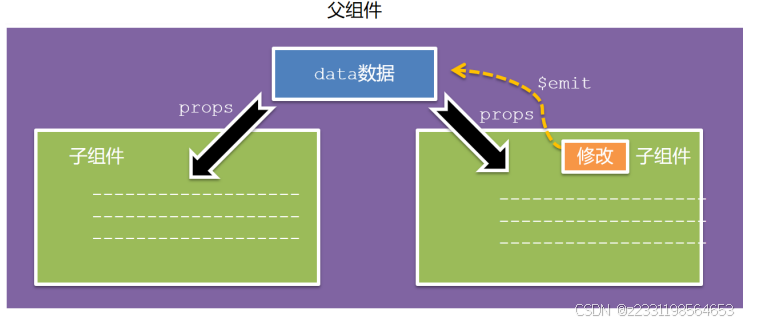 6. 父向子通信代码示例 父组件通过 props 将数据传递给子组件 父组件 App.vue
6. 父向子通信代码示例 父组件通过 props 将数据传递给子组件 父组件 App.vue  父向子传值步骤 1. 给子组件以添加属性的方式传值 2. 子组件内部通过 props 接收 3. 模板中直接使用 props 接收的值
父向子传值步骤 1. 给子组件以添加属性的方式传值 2. 子组件内部通过 props 接收 3. 模板中直接使用 props 接收的值 9.路由介绍
9.1.思考
单页面应用程序,之所以开发效率高,性能好,用户体验好 最大的原因就是: 页面按需更新 比如当点击【发现音乐】和【关注】时, 只是更新下面部分内容 ,对于头部是不更新的 要按需更新,首先就需要明确: 访问路径 和 组件 的对应关系! 0. 子组件向父组件传值 1. 什么是路由 2. 如何配置路由 3. 路由传参 4. 前端访问后端代码 5 访问路径 和 组件的对应关系如何确定呢? 路由 路由 : 就是路径和组件建立关联关系的过程。
比如当点击【发现音乐】和【关注】时, 只是更新下面部分内容 ,对于头部是不更新的 要按需更新,首先就需要明确: 访问路径 和 组件 的对应关系! 0. 子组件向父组件传值 1. 什么是路由 2. 如何配置路由 3. 路由传参 4. 前端访问后端代码 5 访问路径 和 组件的对应关系如何确定呢? 路由 路由 : 就是路径和组件建立关联关系的过程。 9.2 vue中如何使用路径
我们刚才演示了路由的基本使用。 --- 通过在地址栏输入路由地址,在根据路由配置找到对应的组 件,并渲染该组件。 ( 1 )第一种 : 声明式路径<router-link to="/login">登录</router-link> methods:{my(){//路由跳转---编码式路由this.$router.push("/register")}}9.3. 路由传递
9.3.1 声明路由--查询参数
类似于之前 路由也是这种模式 对应的组件接受查询参数。 this.$route.query. 参数名9.3.2 声明路由--动态路由参数
2. 路由配置时 : { path="/ 路由路径 /: 参数名 "} 3. 相应的组件中接受参数值 this.$route.params. 参数名9.3.3 查询参数和动态路由参数
1. 查询参数传参 ( 比较适合传 多个参数 ) 1. 跳转: to="/path? 参数名 = 值 & 参数名 2= 值 " 2. 获取: this.$route.query. 参数名 2. 动态路由传参 ( 优雅简洁 ,传单个参数比较方便 ) 1. 配置动态路由: path: "/path/: 参数名 " 2. 跳转: to="/path/ 参数值 " 3. 获取: this.$route.params. 参数名 <router-link to="/login"> 登录 </router-link> 1 methods:{ my(){ // 路由跳转 --- 编码式路由 this.$router.push("/register") } } const originalPush = VueRouter.prototype.push // 修改原型对象中的 push 方法 VueRouter.prototype.push = function push(location) { return originalPush.call(this, location).catch(err => err) } 5 注意:动态路由也可以传多个参数,但一般只传一个 准备传递参数 --- 查询参数和动态路由参数9.3.4 编码路由--查询参数
my(){//路由跳转---编码式路由//简写版://this.$router.push("/my?name=ldh&age=18")//完整版this.$router.push({path: "/my",query:{name:"张嘉琪",age:88},})}created() {this.name=this.$route.query.name;this.age=this.$route.query.age;}9.3.5 编码路由--动态路由参数
//动态路由参数--简介版// this.$router.push("/my/zcj")this.$router.push({// path:"/my", //表示路由的path的值name:"My", //表示路由的名称params:{key:"wzy"}})//path不能和params配合使用。 name可以和params配合使用//create()created() {this.name=this.$route.params.key;// this.name=this.$route.query.name;// this.age=this.$route.query.age;}当出现NavigationDuplicated: Avoided redundant navigation to current location: "/register".问题时
解决方案 : /router/index.js 添加如下代码 Vue-Router3.0const originalPush = VueRouter.prototype.push//修改原型对象中的push方法VueRouter.prototype.push = function push(location) {return originalPush.call(this, location).catch(err => err)}